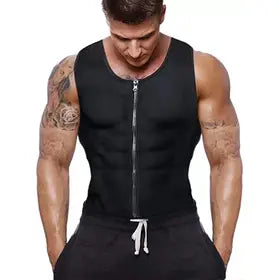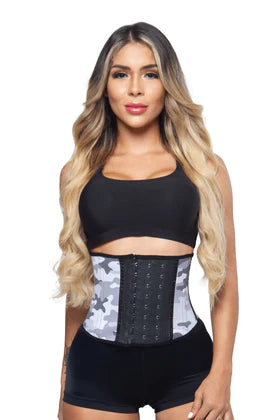
Maintaining Healthy Muscles Through Waist Training
Strong muscle health will reduce the likelihood of injury, pain, weakness, and cramps during bouts of exercise. Additionally, when our muscles are nourished, it can also reduce the likelihood of diabetes, arthritis, and other chronic health conditions. When using a waist trainer, exercising, and dieting, maintaining and improving overall muscle health will help with fitness. Let's take a look at some of the ways that we can maintain our muscles to reach our desired fitness goals.

Eating the right types of protein
Protein is an essential building block of muscles. Not only is it important for athletes and young people who want to perform their best, but it's also important for middle-aged people who are looking to get back into shape. There are several foods that contain lean protein to help you maintain your muscle health:
- Eggs: Eggs contain leucine, which helps build and maintain muscle mass, as well as other important vitamins and minerals.
- Fish and lean white meats: Diets rich in chicken, fish, turkey, and other white meats can help build lean muscle while reducing fat mass in the body.
- Dairy products: Dairy products like Greek yogurt and cottage cheese contain the right types of proteins and amino acids for maintaining and building lean muscle mass.
- Lean beef: Lean beef contains important amino acids like creatine that can increase the rate of lean muscle mass while strength training.
- Almonds: In addition to building muscle mass, almonds help your body burn carbohydrates efficiently.
- Quinoa and brown rice: Quinoa and brown rice, while lower in protein, contain the right amount of carbs to help fuel your body while building your lean muscle mass.
Getting enough vitamins and minerals
Vitamins and minerals don't just have benefits for muscle health, they also help maintain overall health. Vitamin C is important for maintaining your immune system, but it also plays a role in tissue growth and repair, helping your muscles recover after exercise. Vitamin A is also an important player in protein synthesis, helping with muscle growth. Vitamin D plays a role in overall muscle strength and performance. Complex B vitamins, like B12, help produce red blood cells to transport oxygen and nutrients to and from your muscles.
When you are training, minerals are going to help with muscle health, too. You want to make sure that you are getting enough omega 3 fatty acids, because these slow down muscle breakdown, help with joint support, and improve your overall cardiovascular health. Potassium is going to be a huge contributor to reducing muscle cramps. You can find potassium in fruits such as bananas. Calcium is also going to be an important contributor to reducing muscle cramps, as it aids in contractions. Magnesium is going to help reduce muscle cramps and boost your overall energy levels.
Cutting back on alcohol and caffeine
For some people, caffeine is a way to make it through the day. When you are working out, caffeine can lead to dehydration. This is why it's important to limit your intake of caffeine. Drinking caffeinated beverages throughout the day can lead to muscle cramps during your workout.
Alcohol is also a major driver in dehydration. When planning a night out, try to limit yourself to a few drinks on nights where you know you won't be working out the next day. It's also important to consume water if you choose to have a few drinks.

Warm your muscles up before your workout sessions
Many people do not realize that not stretching can lead to sprains, cramps, and other injuries. Warming up your muscles allows your muscles and connective tissues to stretch more easily, giving them a chance to work better. Going through a rigid warm up routine before you exercise will let you:
- Increase your body and muscle temperature, which gives your connective tissues more stretch.
- Reduce the likelihood of an injury.
- Mentally prepare for your fitness session, helping you to visualize your goals.
- Tackle more difficult workout routines, such as strength training, with more success.
Build recovery into your workout routine
Exercise does a certain amount of damage to your muscles and connective tissues. This causes your immune system to repair that damage. Every time you exercise, you build new muscle mass. Recovery helps speed up this process and make your muscles ready for your next session.
Your recovery should begin with a few stretches and some lighter exercise to help you cool down. If you recently finished an intense run, you might try walking for about fifteen minutes. When you are done lifting weights, some light stretches can help bring the session to a close.
Recovery should also include a few days of rest or some days when you do lighter exercise. Many people who do strength training will do their heavy lifts on Mondays, Wednesdays, and Fridays, while using Tuesdays and Thursdays for other types of exercises.
Recovery also extends outside the fitness center. Make sure to get plenty of sleep when you are not working out. What you eat also plays a role in how your body recovers. Some people will even get massages when they are not working out or use myofascial release to help their tissues recover.
Know what happens to your muscles after you complete a workout session
When you are working out, your body is intensely using its muscles. Your muscles burn energy and this causes your muscle tissue to break down. During the recovery process, your muscles are going through a process where they repair themselves through biochemical processes. After exercise, your muscles will have microscopic tears. The nuclei of your muscle cells will move towards these tears, sending out messages for new proteins to be built.
Your muscles start to heal themselves within five hours of an exercise session. Due to this healing process, it is very important to give your muscles the ample amount of time to start healing. This is why many athletes will take a day off from their heavier routine, giving themselves a passive recovery time or even doing lighter exercises that encourage their muscles to heal to the fullest extent possible.
Make sure to wear your waist trainer at the right times
Wearing your waist trainer should also be a priority. Your waist trainer is going to work on adjusting your posture and strengthening your muscles in your abdomen so that you have the perfect shape that you want. You should wear your waist trainer for about 8 to 10 hours per day. You shouldn't wear your waist trainer while you are working out,, and you should not wear it while you are sleeping. Furthermore, you can wear your waist trainer throughout the day, such as when you are at work or while you are at home.








